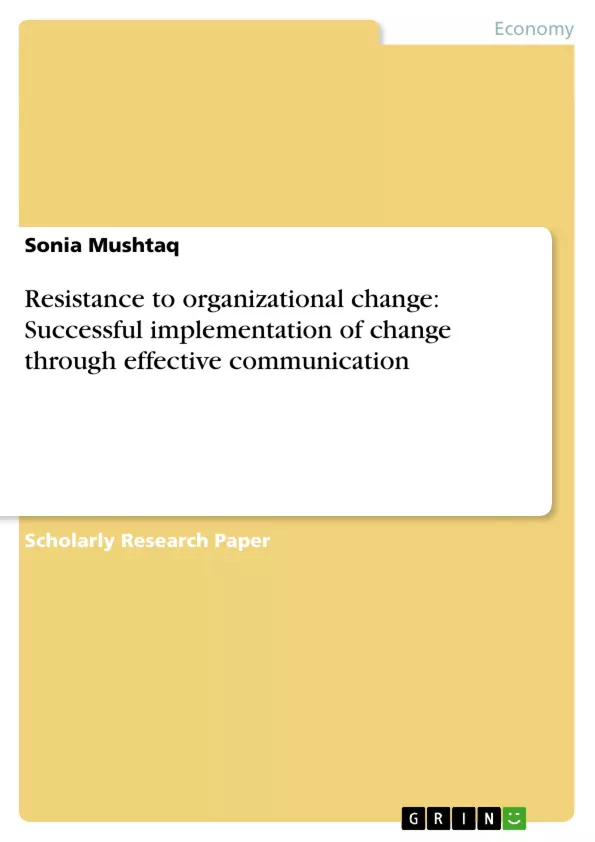Organizations have been passing through transition phase over time. Some organizations
have failed to transform, while others have successfully implemented their desired
change. Previous literature has focused on the rationale behind the failure as well as the
success of these organizations. Literature concluded that the resistance of employees
serves to be a major factor behind the failure of any organization, willing to implement
change. Further, researchers found that this resistance can be lessen by applying suitable
communication techniques to align employees with the coming change according to the
culture of organization and employees. For the purpose of alignment, a charismatic leader
is required who has the potential to eradicate the gaps between the concerns of top
management and its employees. This paper draws attention towards the causes of
resistance; the impact of culture dimensions on organizational change and management
decisions, and examines how communication being a major factor can overcome
resistance by employees. This article eventually recommends that a charismatic
leadership can bring change with the consent of the followers and that is mainly due to
the attributes associated with leader’s traits. Consequently, this article proposes the
methodology that brings a happy ending to a change process. T
Inhaltsverzeichnis (Table of Contents)
- Abstract
- Introduction
- Literature Review
- Organizational Change and employee resistance
- Charismatic Leadership
- Communication as an Effective tool for managing resistance
- Case Study Analysis
- Conclusion
- References
Zielsetzung und Themenschwerpunkte (Objectives and Key Themes)
This paper investigates the factors contributing to resistance to organizational change and explores how effective communication, particularly under charismatic leadership, can mitigate these challenges. The study draws on a diverse range of literature and analyzes a specific case study to demonstrate how organizational culture and employee needs can be effectively addressed during a change process.
- Resistance to Organizational Change
- The Role of Culture in Change Management
- The Impact of Charismatic Leadership
- Effective Communication Strategies
- Case Study Analysis of Successful Change Implementation
Zusammenfassung der Kapitel (Chapter Summaries)
- Abstract: This section provides a concise overview of the paper's central argument, outlining the key factors contributing to resistance to change, the importance of effective communication, and the role of charismatic leadership.
- Introduction: This chapter sets the stage for the research, outlining the challenges of implementing organizational change and introducing the key questions explored in the paper. It emphasizes the desire for a successful change process with a "happy ending."
- Literature Review: This chapter provides a comprehensive overview of existing research on resistance to change, highlighting the role of employee perceptions, job security, and cultural dimensions. It draws upon the work of various scholars, including Hofstede, to explain the influence of national culture on organizational behavior.
- Organizational Change and employee resistance: This section further delves into the concept of organizational change, exploring various types of changes and the common reasons behind them. It highlights the potential for resistance from employees who may not fully understand or agree with the proposed changes.
Schlüsselwörter (Keywords)
This paper focuses on the core concepts of organizational change, resistance to change, and the crucial role of communication, particularly under charismatic leadership, in facilitating successful change implementation. It explores the impact of cultural dimensions on management decisions and analyzes the case study of Pakistan Telecommunication Company Limited (PTCL) as an example of successful change management.
- Quote paper
- Sonia Mushtaq (Author), 2011, Resistance to organizational change: Successful implementation of change through effective communication, Munich, GRIN Verlag, https://www.grin.com/document/196928



